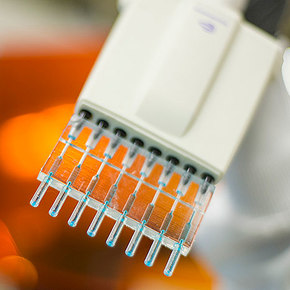3D-Printed ELISA Test Cuts Costs and Time
 May-27-19
A 3D-printed ELISA device that fits on a standard pipette could make it easier to offer specialized medical tests in rural areas.
May-27-19
A 3D-printed ELISA device that fits on a standard pipette could make it easier to offer specialized medical tests in rural areas.The ELISA (enzyme-linked immunosorbent assay) is commonly used to identify a number of diseases ranging from cancers to Lyme, but the procedure is monotonous and requires many steps. To simplify the process, the team from the University of Connecticut created a low-cost, 3D-printed device that fits onto a standard pipette. The device can be using to draw samples or washing fluids directly, with each ‘tip’ functioning as one micro-well on the 96-well ELISA plate. The test takes place inside the tips themselves, where the reservoir’s increased surface areas reduces the amount of antibodies needed as well as the time needed to deliver the results.
Image Credit - Sean Flynn/UConn Photo - UConn graduate student Mohamed Sharafeldin, and his advisor, chemistry professor James Rusling, developed a way to 3D print a pipette tip.

More Info about this Invention:
[AZOM.COM][TODAY.UCONN.EDU]

Add Your Comment